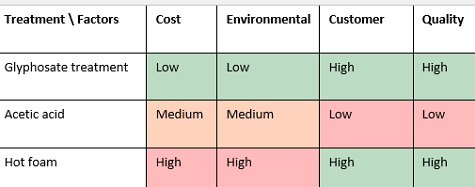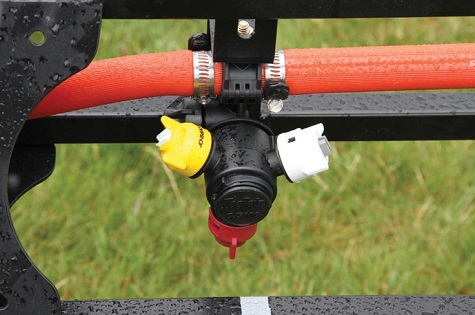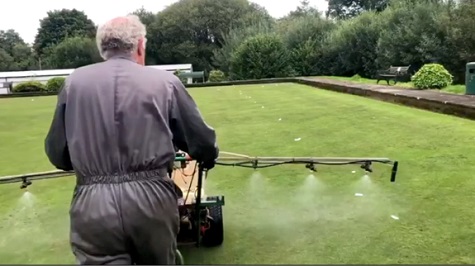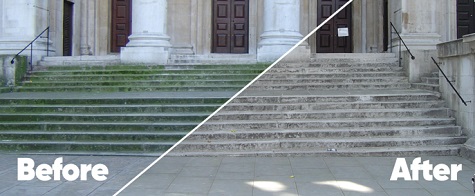
In the first of this series of articles, we sought to get a clearer definition of what sustainability is and what it means to an organisation, especially in the amenity horticulture sector. Sustainability comprises three pillars or components namely economic viability, environmental protection and social equity. The definition of these is important when any organisation seeks to become more sustainable, or indeed seeks to deliver more sustainable products and services to its customers. The remaining articles on this subject will now look more closely at various sub sectors of, and activities in amenity, and those providing services to them which hopefully will help all readers in their own search for sustainability. Previously we considered Sustainability In Practice, Sustainability At The Sharp End, Sustainability In Supply, Managing Weeds Sustainably and Innovation & Sustainability.
This month we focus particularly on the area of carbon foot printing and how life cycle analysis allows us to more carefully assess sustainable practices.
The term life cycle analysis (LCA) might seem at first sight somewhat academic but it is highly relevant, in a practical sense, in the drive towards sustainable practice, as this brief article will endeavour to demonstrate. When looking at processes, such as for example the supply of the food we eat, it is very important, in sustainability terms that we consider every stage of its journey. For food supply, this involves evaluation of the way we produce it, process it, supply it to our tables and dispose of the waste.
As another example, more recently in the news, there has been controversy about the opening of a mine in Cumbria to produce stoking coal for the steel industry. If purely looked at in a one dimensional way, new coal production spells carbon emissions and is not in line with government zero carbon policy. However, the alternative is importing which has its own carbon footprint in extraction and transporting. It is not my role to make a view on this one way or another. Indeed I would rather stay out of that, but it does perhaps illustrate the need for a full life cycle consideration when considering complex decisions, and certainly ones with extended supply chains and processing involved.
Before looking at how this might relate to amenity operations, we need to perhaps expand a little more on the process of life cycle analysis (LCA). It is the act of measuring the environmental impact of a product or service, from the raw material stage of putting the product or service together, through the use phase where the service, material or product serves its’ purpose, to the “end-of-life” stage where the product is broken down in whatever fashion occurs. . An LCA measures the environmental impacts of each distinct part involved in creating and using such products and services, such as energy used in production, fuel used in transport, and end-of-life ecological costs. This helps us compare between products, materials, and methods used, providing useful information by which to make decisions that could help the environment.
Specialists use more than one standardised method to undertake LCA but all do the same thing. They seek to provide the best understanding of the environmental consequences of a product or service, as researchers can currently get, throughout its life cycle. Ultimately, an LCA is interested in what we have to take from the environment, in terms of raw materials and energy, and what impact the product then has on the environment during its use (or the service, or the material). It’s called “life cycle” because it takes the entire existence of the product into account.
So what is the relevance of all this to operators in amenity, seeking to be more sustainable? Well perhaps we can look at the area of weed management as an example. In choosing the correct approach to managing weeds, Life Cycle Analysis (LCA) can give us insight and allow some quantification of carbon dioxide emissions (CO2) and other environmental burdens (e.g. water consumption) associated with each control method. One application of such an approach is perhaps best illustrated by a recent independently run and comprehensive study of different approaches to weed control on hard surfaces in the City of Cardiff.
The Cardiff Trial looked at all aspects of cost, total product use and water and fuel use, and applied LCA to the different approaches employed. LCA measured environmental impacts against a large number of impact categories such as global warming, stratospheric ozone depletion and ionizing radiation, through all the life stages of any product used from manufacture right through to end-use. However, Cardiff Council was also interested not only in the costs and environmental impacts of the pavement weed control treatments tested, but also customer satisfaction and quality from a public perspective. The work was undertaken by independent consultants, Advanced Invasives, and the results have now been published by Cardiff Council.
A simplified summary of the outcome from this evaluation is given below:

The overall LCA conclusion might seem initially surprising to some in that pesticide use, in this case glyphosate, was shown to have less overall environmental impact than the other non-chemical control methods tested in this study. In many ways the results were comparable to those found in a similar UK study of weed treatments for controlling weeds on hard surfaces known as the Thanet Trial led by East Malling Research (EMR); however, the Thanet Trial did not test the different pavement weed control treatments separately, meaning that it was difficult to tell which treatments had the greatest impacts. In the Cardiff Trial, freshwater impacts were the only ones where glyphosate-based control methods had higher environmental impact than non-herbicide based approaches. In the Netherlands, an LCA investigating pavement weed control methods also found that freshwater impacts contributed toward elevated glyphosate-based control method results, but noted that physical control methods produced less favourable results and greater CO2 emissions than herbicide application.

It is important to note that all trials conducted are not meant to be a critique of any particular method. Importantly, at a practical level, amenity weed control can be complex and involve many factors – what works and a client needs in one location may not in another. However what the UK and Dutch trials point towards is that when considering weed control, the correct way is to take account of the evidence and integrate fully, making use of all tools available where appropriate, and matching these to specific situational needs. The right combination, fully co-ordinated, can drive a much more sustainable approach with less wastage, more targeted use of herbicide as required and minimising environmental impact in all its forms.
Building slightly further on this LCA approach to weed management on hard surfaces, a presentation by Peter Corbett from the Amenity Forum, at a conference a couple of years ago is also relevant. He took a more empirical approach to matters, building upon previous work at that time. This sought to compare different methods of weed control based upon a sustainability score, taking into account economic and environmental impacts including carbon foot printing. Again, this looked at the life cycle of different options for weed management and producing a sustainability score based upon the impacts on the economy, society and environment. The sustainability score was calculated based upon the three pillars of sustainability - economic, society and environment. Each pillar had four measures identified, ranked out of 6, 1 for most sustainable, 6 for least sustainable.
Whilst the presenter emphasised that some of the calculations were inevitably somewhat subjective, as presented, the following are cumulative rankings to produce a sustainability score for selected methods:
Again it is important to emphasise that this does not seek to say any particular method is wrong, all have their merits – an integrated approach making use of all tools available is by far the best way towards sustainable practice, but, nevertheless, the outcomes are interesting and thought provoking and illustrate the need to take a balanced approach in implementing sustainable practice.

I recognise that this article might have been slightly more academic in its presentation than previous ones but its purpose is to illustrate that, in any decision making, especially linked to sustainable practice, it is important to consider all stages of the processes and procedures involved in operations. Linking back to weed control that is why I argue against people talking about seeking alternatives. For any specific situation it is about utilising all techniques and options available in the right combination to achieve required weed control levels in a sustainable fashion.

This article has sought to demonstrate that adopting sustainable practice cannot be one dimensional but involves careful thought. Again the term that sustainable practice means good practice comes to mind and certainly the road to sustainable practice involves small steps focussed on the three key components described at the outset of these articles, and above all achieving required results. There is no right or wrong way but keeping sustainability in mind and the consequences of any actions is a good start.
‘’In any moment of decision, the best thing you can do is the right thing, the next is the wrong thing and the worst thing you can do is nothing’’ - Theodore Roosevelt.
The next article in this series will look more closely at the subject of skills, education and training and its importance in helping all involved in their search for more sustainable practices.